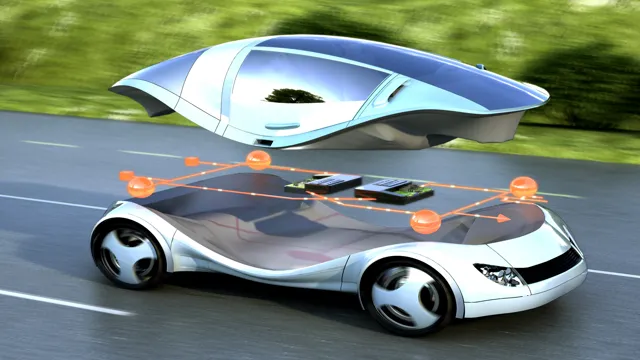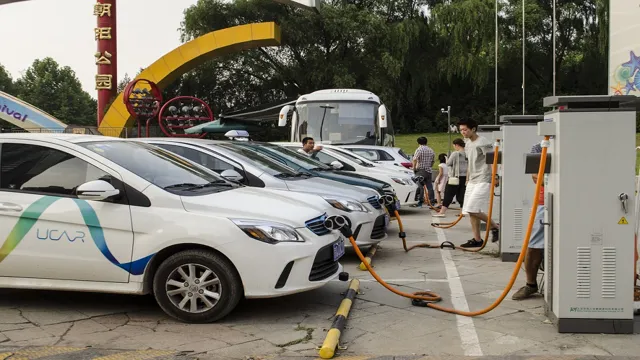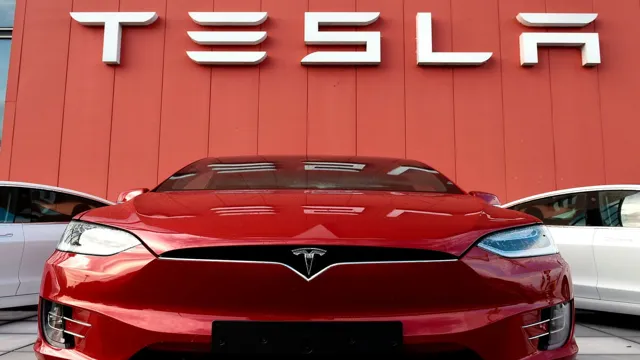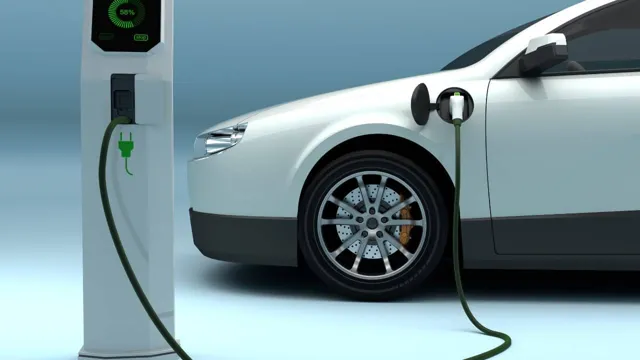Revving up for the Future: The Latest Breakthroughs in Electric Car Technology
Electric cars have been around for a while, but they are now more advanced and innovative than ever before. The latest electric car technology is revolutionizing mobility and changing the way we look at transportation. With features like longer ranges, faster charging times, and improved performance, electric cars are becoming more practical and accessible to a wider range of consumers.
In addition, the growth of renewable energy sources means that electric cars can be fueled by clean, sustainable energy. One of the most significant advancements in electric car technology is the improvement in battery technology. With new materials and designs, batteries are becoming more efficient, allowing electric cars to travel longer distances on a single charge.
This makes electric cars more practical for everyday use and longer journeys, with ranges of up to 300 miles or more. Additionally, faster charging times mean that electric car owners can top up their batteries quickly and conveniently. Another exciting development in electric car technology is the integration of smart features such as self-driving capabilities, autonomous parking, and advanced safety systems.
These technologies are making electric cars safer and more convenient to use, reducing the workload on drivers and improving the overall driving experience. Overall, the latest electric car technology is revolutionizing the way we think about transportation. With improved battery technology, smart features, and the growth of renewable energy sources, electric cars have become more practical, accessible, and sustainable.
Whether you are commuting to work or embarking on a long road trip, electric cars offer a clean, efficient, and enjoyable driving experience.
Power Sources
Electric cars have revolutionized the way we view transportation and with the latest electric car technology, the power sources are becoming even more efficient. The traditional lead-acid batteries are being replaced with lithium-ion batteries that charge faster, last longer, and are more environmentally friendly. Charging stations are appearing in more locations allowing for easier accessibility and convenience for electric car owners.
Despite a higher initial cost, the long-term cost of operating an electric car is much lower due to their energy efficiency. As the world shifts towards renewable energy, electric cars are leading the way with alternative power sources. With continued innovation and advancement in technology, it’s exciting to see the potential for future developments in the electric car industry.
Battery Innovations
Battery Innovations When it comes to power sources, battery innovations have come a long way in recent years. With the increasing demand for portable electronics and sustainable energy solutions, there has been a surge in research and development to create batteries with higher energy densities, longer lifespans, and faster charging times. From lithium-ion to solid-state batteries, engineers are exploring a range of technologies to improve battery performance and durability.
One of the most exciting advancements in battery technology is the development of rechargeable zinc-air batteries. These batteries use zinc and oxygen as reactants, which are abundant and inexpensive compared to other materials like lithium or cobalt. They also have a higher energy density and longer lifespan than traditional lithium-ion batteries, making them an attractive option for electric vehicles and grid-scale energy storage.
Despite these advancements, there is still much room for improvement in battery technology, and researchers are continuing to explore new materials and approaches to create even more innovative power sources for the future.
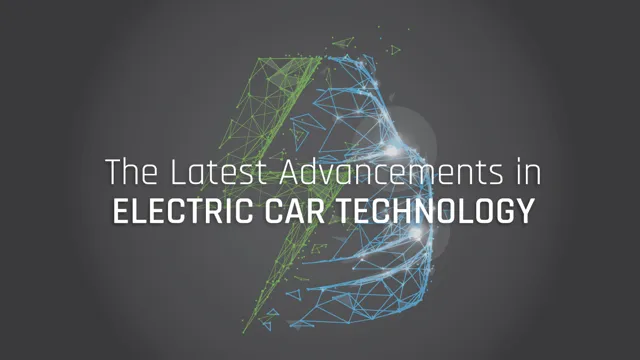
Wireless Charging
Wireless charging has become increasingly popular in recent years as more and more devices are being designed to support the technology. Unlike traditional charging methods that use cables and power adapters, wireless charging allows devices to be charged simply by placing them on a charging pad or mat. This is made possible through the use of electromagnetic fields that transfer power from the charging pad to the device’s battery.
The convenience of wireless charging has made it a popular choice for many users who want to minimize clutter and simplify the charging process. However, it’s important to note that not all devices are compatible with wireless charging and that charging speeds may be slower than traditional methods. Nonetheless, wireless charging is a promising technology that is likely to continue growing in popularity in the coming years.
Autonomous Driving Features
Are you interested in the latest electric car technology? One of the most exciting developments in the industry has been the emergence of autonomous driving features. These cutting-edge technologies allow vehicles to navigate the roads safely, without the need for constant human intervention. While there is still much work to be done before fully autonomous cars are a reality, today’s electric cars are packed with features that make driving safer and more convenient.
For example, many electric cars have adaptive cruise control, which uses sensors to adjust your speed based on the traffic around you. Some also come equipped with lane departure warnings, which alert you if you start to drift out of your lane. With these and other features, electric cars are leading the way to a more autonomous future on the road.
Advanced Sensors
As technology continues to make advancements in the automotive industry, one of the most exciting areas of development is in autonomous driving features. These features rely heavily on advanced sensors to gather and process real-time data, allowing vehicles to navigate roads and avoid obstacles without human input. One such sensor is the LiDAR, which uses lasers to create detailed 3D maps of the environment around the car.
This information is then used by the vehicle’s computer system to identify objects and make decisions about how to respond to them. Other sensors, such as advanced cameras and radar systems, are also used to provide additional information about the car’s surroundings. With these sensors in place, autonomous vehicles can navigate complex environments more accurately and safely than ever before.
As the technology continues to evolve, we can expect to see more sophisticated autonomous driving features coming to vehicles in the near future.
Intelligent Infrastructure
Intelligent infrastructure is rapidly transforming our daily routines, and autonomous driving is one of the most exciting boons of this revolution. With autonomous driving features, drivers can experience a much safer and more enjoyable driving experience. These features make it possible for vehicles to sense their environment and adjust their actions accordingly, without human input.
With sophisticated sensors and cameras, autonomous vehicles can detect and respond to obstacles and traffic patterns in real-time, making the roads safer for everyone. Additionally, this technology enables cars to provide drivers with information about potential hazards such as accidents, poor weather or road conditions, and traffic congestion. Ultimately, autonomous driving features will revolutionize the way we travel, enhancing safety and efficiency while freeing up our time to do other things while on the road.
Artificial Intelligence
Artificial Intelligence Autonomous driving features using artificial intelligence have revolutionized the way we commute on roads. AI-powered cars integrate a plethora of sensors, cameras and software technologies to perceive the environment, plan actions and steer the vehicle accordingly, sans human intervention. With the advent of this technology, autonomous vehicles can make split-second decisions based on real-time data with high accuracy, reducing the chances of accidents and making roads safer.
Features such as adaptive cruise control, traffic jam assist, lane keeping assist, and automatic emergency braking system make the ride more comfortable and less stressful for the driver. The use of AI also enables swift and seamless navigation through different terrains and weather conditions. While the technology is still in its early stages, the potential benefits of autonomous driving features are undeniable.
As AI continues to advance, we can expect to see more sophisticated and efficient autonomous driving features in the future.
Design and Comfort
The latest electric car technology not only focuses on sustainability but also on improving design and comfort. With advancements in battery and motor technology, electric cars are becoming more powerful, making them more akin to traditional gas-powered cars. Additionally, designers are incorporating sleek and modern features, making electric cars look like the cars of the future.
But, it’s not just about the exterior design. Interior design plays a crucial role in electric cars. With the absence of engine noise, electric cars allow for a new level of comfort and convenience.
Manufacturers are experimenting with features such as massage seats, smart climate control, and augmented reality displays. These advancements not only make electric cars more comfortable to drive but also make them more accessible to people with disabilities. With the latest electric car technology, sustainability does not have to come at the expense of comfort or style.
Sleek Aesthetics
When it comes to sleek aesthetics, it’s not just about looks. A good design should also prioritize comfort without sacrificing style. Take, for example, a minimalist chair with clean lines and a slim profile.
It may look great, but if it’s uncomfortable to sit in for long periods, it defeats the purpose. This is where the marriage of design and ergonomics comes into play. To achieve both sleekness and comfort, a chair’s dimensions, height, and angles should be carefully considered.
It’s all about finding the balance between form and function. So, the next time you’re shopping for furniture, keep in mind that a beautiful piece should not just appeal to the eyes, but also be inviting to use. Your back and bum will thank you for it.
Eco-Friendly Interiors
When it comes to designing an eco-friendly interior, many people may think that design and comfort have to be sacrificed in the process. However, this couldn’t be further from the truth! In fact, designing an eco-friendly interior can actually enhance the overall look and feel of your space, all while being better for the environment. By opting for sustainable materials such as bamboo or reclaimed wood, you can add a natural touch to your decor that is both visually appealing and eco-friendly.
Additionally, incorporating energy-efficient lighting and appliances can significantly lower your energy consumption while also providing a modern and stylish touch to your space. So, whether you’re redesigning your entire home or just looking to add some eco-friendly touches, rest assured that you don’t have to compromise on comfort or design in order to create an eco-friendly interior.
Cost and Availability
The latest electric car technology offers a promising future for sustainable transportation but still presents challenges in terms of cost and availability. While electric cars are becoming more affordable, their prices are still generally higher than traditional gasoline cars. However, as more car manufacturers invest in the development of electric vehicles, prices are expected to decrease in the near future.
In addition, the availability of charging infrastructure remains a barrier to mainstream adoption. However, many governments and private organizations have launched initiatives to build more charging stations and offer incentives for electric car ownership, which will ultimately increase their availability. It’s an exciting time for the electric vehicle industry, and with advancements in technology and a growing demand for environmentally friendly transportation, it’s only a matter of time before these challenges are overcome.
Conclusion
In conclusion, the latest electric car technology is not just about eco-friendliness and fuel economy. It’s about smarter, faster, and more innovative driving experiences. From instant torque and lightning-fast acceleration to advanced AI capabilities and self-driving features, electric cars offer a glimpse into a future where sustainability and performance go hand in hand.
As we continue to push the boundaries of what’s possible, who knows what other electrifying surprises the automotive industry has in store for us. One thing’s for certain, though – it’s an exciting time to be behind the wheel of an electric car.”
FAQs
What is the latest electric car technology?
The latest electric car technology includes features such as longer battery life, faster charging times, and improved regenerative braking systems that generate energy while slowing down or stopping the vehicle.
How do electric car batteries work?
Electric car batteries use a chemical reaction to store energy that can power the vehicle’s electric motor. When the battery is depleted, it can be recharged by plugging it into a charging station or electric outlet.
What are the benefits of driving an electric car?
Driving an electric car offers numerous benefits, such as lower emissions, reduced dependence on fossil fuels, and lower operating costs due to lower fuel and maintenance expenses.
How long does it take to charge an electric car?
Charging times for electric cars vary depending on the battery size and the charging station used. While some fast charging stations can charge a vehicle in as little as 30 minutes, most home charging stations take several hours to fully charge the battery.
